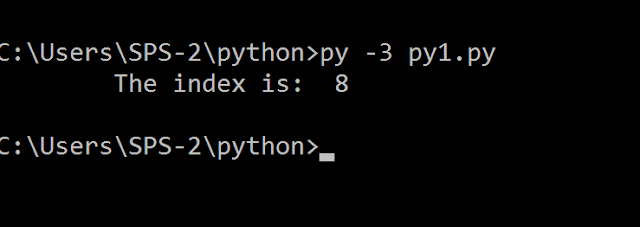Python is a
general-purpose interpreted, interactive, object-oriented, and high level
programming language.
It supports
functional and structured programming methods as well as OOP.
It can be
used as a scripting language or can be compiled to byte-code for building large
applications. It can be
easily integrated with C, C++, Java.
Environment Setup
Download
python from website http://www.python.org/.
Install the downloaded file.
After installing setup the path to command prompt.
Writing a First Program
Notepad is the best environment to write program easily and can be executed through command prompt.
Step1: Write a program in notepad.
Step2: Execute through command prompt.
Creating Variables
We no need to create variables in python. Variables are created while assigning a to them.
Conditional Statements
1. If() statement:
Syntax: if condition:
// statements
// statement
2. if..else() statement:
Syntax: if condition:
// statements
elif consition:
// statement
else
// statements
Looping Statements
1. for() loop:
Syntax: for variable in Collection:
//statements(s)
2. while() loop:
Syntax: while(<condition>):
// statement(s)
String Manipulation
1. Accessing Characters from string.
2. Updating String.
3. Special String Operators.
4. String Formating Operator.
5. index() method:
Syntax: source_string.index(destination_station,start_index,length)
5. find() method:
5. substring:
Reading Keyboard Input
Python provides two built in functions to read input from users.
1. input()
File Handling in Python
1. Reading a file
Step1: Input a file
Step2: Write a Program
Step3: Execute
Example : Parsing Menu
Step1: Program
Step2: Input file
Step3: Output
Step4: Output through text file








































0 comments: